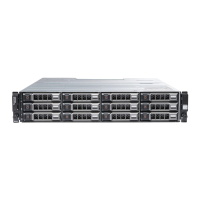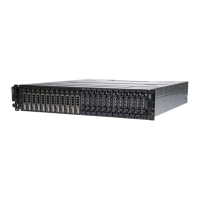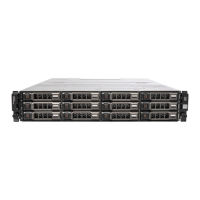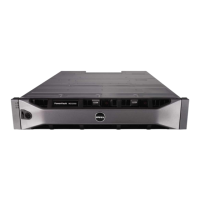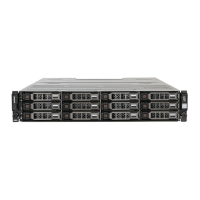142 Configuration: Disk Groups and Virtual Disks
[size=1.6T][features=3 queue_if_no_path
pg_init_retries 50][hwhandler=1 rdac]
\_ round-robin 0 [prio=6][active]
\_ 1:0:0:2 sdf 8:80 [active][ready]
\_ round-robin 0 [prio=1][enabled]
\_ 0:0:0:2 sde 8:64 [active][ghost]
In this example, the
mpath6
device contains two paths:
-- /dev/sdf at Host 1, Channel 0, Target 0, LUN 2
--/dev/sde at Host 0, Channel 0, Target 0, LUN 2
3
Flush the multi-pathing device mapping using the following command
# multipath -f /dev/mapper/mapth_x
where
mapth_x
is the device you want to delete.
4
Delete the paths related with this device using the following command:
# echo 1 > /sys/block/sd_x/device/delete
where
sd_x
is the SD node (disk device) returned by the multipath
command. Repeat this command for all paths related to this device.
For example:
#echo 1 > /sys/block/sdf/device/delete
#echo 1 > /sys/block/sde/device/delete
5
Remove mapping from MDSM, or delete the LUN if necessary.
6
If you want to map another LUN or increase volume capacity, perform this
action from MDSM.
NOTE: If you are only testing LUN removal, you can stop at this step.
7
If a new LUN is mapped or volume capacity is changed, run the following
command:
# rescan_dm_devs
8
Use the
multipath -ll
command to verify that:
book.book Page 142 Tuesday, September 27, 2011 3:13 PM
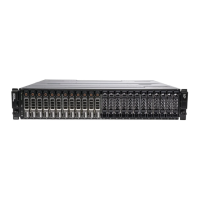
